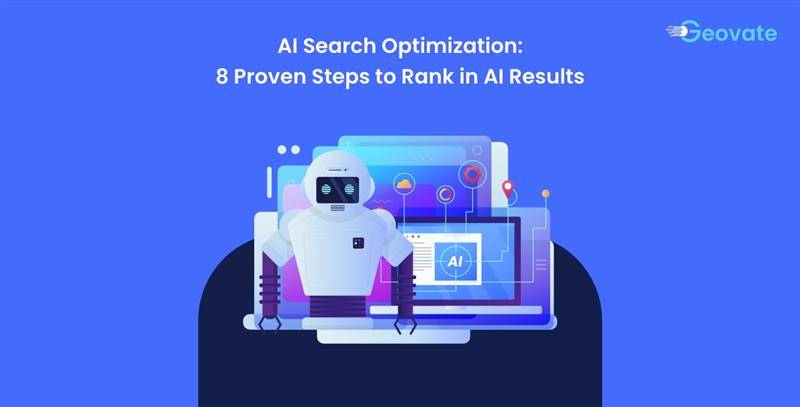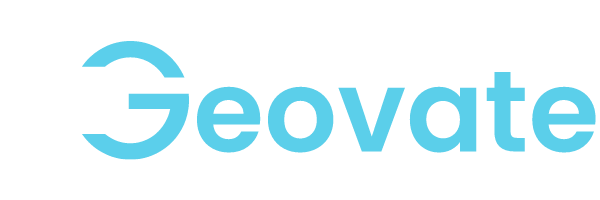AI Search Optimization: 8 Proven Steps to Rank in AI Results in 2025
Wed,22 Oct 2025 13:35:00- Font Size
- Share Content

How brands can dominate ChatGPT, Gemini, and AI-driven search ecosystems
In 2025, the way people search online has changed forever. With AI-driven platforms like ChatGPT, Perplexity, and Google’s AI Overviews, users no longer need to click through pages—they get complete answers instantly. This evolution demands a new discipline: AI Search Optimization (AISO).
Let’s explore how your brand can optimize for this next era of search.
What Is AI Search Optimization?
AI Search Optimization (AISO) is the process of making your content discoverable, credible, and usable by large language models (LLMs) and AI search systems.
Traditional SEO helps you rank on Google SERPs. AISO ensures your brand becomes part of AI-generated answers—the content users see directly inside chat-based results.
In other words, SEO gets you seen. AISO gets you quoted.
Brands offering advanced aiseo services help companies achieve this kind of AI-level visibility.
Why AISO Matters in 2025
- 71% of global users now use AI tools for search.
- CTR (click-through rate) has dropped up to 30% for traditional results due to AI overviews.
- AI models are rewriting the web’s hierarchy—only trusted, structured, and expert-backed content earns citations.
If your content isn’t optimized for AI systems, your competitors will own the answers that shape user opinions. That’s why investing in aiseo optimization services is becoming critical for long-term digital dominance.
AISO vs Traditional SEO: Key Differences
Factor | Traditional SEO | AI Search Optimization |
Goal | Rank web pages | Earn citations in AI responses |
Optimization focus | Keywords, backlinks, CTR | Clarity, credibility, data structure |
Search Interface | SERPs | Chatbots & AI overviews |
Example Tools | Google Search Console, SEMrush | ChatGPT, Gemini, Perplexity |
Primary Metric | Organic traffic | AI mention share / source inclusion |
AI-driven engines don’t crawl links—they interpret meaning.
That’s why your content’s structure, entities, and factual grounding matter more than ever.
How to Optimize for AI Search Engines (Step-by-Step)
1. Create Clarity for Machines and Humans
AI models understand patterns, not confusion.
Structure your content logically: start with definitions, move into frameworks, and end with examples.
Use explicit headers (H2/H3) with descriptive text like:
“Step 1: Define Your Brand Entities”
“Step 2: Add Structured Data Markup”
This allows both search engines and LLMs to understand your content’s hierarchy.
2. Use Data, Tables & Templates
AI engines love structured data.
Include comparison tables, templates, and frameworks—anything machine-readable.
Example:
Tool | Best For | Unique Feature |
Geovate | AI SEO Strategy | GEO-based content optimization |
SurferSEO | SERP Optimization | On-page scoring |
Clearscope | Keyword Relevance | Topic coverage analysis |
Such tables increase your chance of being cited in AI answers because they offer ready-to-use, concise information.
3. Condense Information Without Losing Depth
AI and humans both prefer brevity with context.
Use short paragraphs, bulleted lists, and “key takeaways” sections.
Pro tip:
At the end of every article, include a section like this:
Key Takeaways:
- AI search is redefining visibility.
- Structured content gets AI attention.
- Citations matter more than clicks.
This summary helps AI models extract concise information and recognize your article as a trustworthy, scannable source.
4. Cite Credible Sources
AI systems rely heavily on verified content.
Include data, references, or quotes from recognized organizations (e.g., Google Research, HubSpot, Search Engine Land).
Example:
According to Search Engine Land, 71.5% of users rely on AI tools for search queries.
Linking to credible data signals trustworthiness, improving your brand’s AI ranking potential.
5. Strengthen Your Brand Entity
AI doesn’t just index websites—it maps entities.
An entity could be your company, founder, or product.
You want LLMs to associate your brand with expertise in a topic.
How to build entity visibility:
- Create consistent brand mentions across platforms (LinkedIn, Crunchbase, etc.)
- Use schema markup (Organization, Person, FAQPage, HowTo)
- Publish on authoritative guest platforms to build contextual links
When AI models like ChatGPT or Gemini scan the web, your brand should already exist in their knowledge graph.
Agencies offering aiseo optimization services often help businesses implement structured data and entity-based visibility strategies effectively.
6. Keep Practicing Classic SEO
AISO doesn’t replace SEO—it extends it.
Keep optimizing:
- Meta titles & descriptions
- Core Web Vitals
- Internal linking
- Topical authority clusters
Google’s AI still depends on traditional ranking signals to decide which sites feed its LLMs.
7. Add Author Expertise & Transparency
AI systems now evaluate authorship signals for trust.
Add an author bio with:
- Credentials
- Experience
- Linked profiles (LinkedIn, X, Medium)
When AI extracts content, it prioritizes expert-backed insights.
E-E-A-T (Experience, Expertise, Authoritativeness, Trustworthiness) is now the foundation of AISO.
8. Track AI Visibility Metrics
Just as SEO tracks clicks and impressions, AISO requires AI mention tracking.
Tools like
- Geovate AI Tracker (coming soon)
- BrightEdge Copilot
- Perplexity Labs
can show where your brand appears in AI answers.
Metrics to monitor:
- LLM citations (ChatGPT, Gemini, Perplexity)
- Brand mention frequency
- Answer box visibility
- AI traffic referral patterns
This helps you measure unseen visibility—where users get answers but don’t click.
Common Mistakes to Avoid
- Over-optimizing with keywords – AI understands meaning, not density.
- Ignoring citations – AI won’t quote sources it can’t verify.
- Publishing unstructured text – LLMs struggle to parse long, unbroken content.
- Neglecting updates – AI rewards freshness; outdated info gets filtered out.
- Skipping brand-building – No entity = no AI recognition.
The Future: From SEO to GEO
At Geovate, we call this evolution Generative Engine Optimization (GEO) — optimizing not just for algorithms, but for AI cognition.
GEO integrates:
- Semantic SEO
- Entity optimization
- Conversational context modeling
- Answer precision scoring
By aligning your content with how AI interprets knowledge, GEO ensures you rank in answers, not just results.
Partnering with experts in aiseo services helps businesses implement GEO strategies seamlessly across platforms.
Final Thoughts
The future of search is conversational, visual, and powered by LLMs.
To thrive, brands must pivot from keyword-first to knowledge-first strategies.
By embracing AI Search Optimization, you’re not just improving visibility—you’re shaping how AI perceives your brand.
As AI engines evolve, visibility won’t just be about clicks—it’ll be about being the source.
Ready to Geovate your content for AI search?
Contact Geovate today to start your AI Search Optimization journey with industry-leading aiseo optimization services.
Frequently Asked Questions
Q1. What is AI Search Optimization (AISO)?
AI Search Optimization (AISO) is the process of optimizing content to be discoverable and cited by large language models (LLMs) and AI-driven search platforms like ChatGPT, Gemini, and Perplexity. Unlike traditional SEO that focuses on ranking web pages, AISO ensures your content becomes part of AI-generated answers, improving visibility inside conversational search results.
Q2. How does AISO differ from traditional SEO?
Traditional SEO helps websites rank on Google’s SERPs, while AISO focuses on earning citations in AI responses. Instead of optimizing for keywords and backlinks, AISO prioritizes clarity, credibility, structured data, and entity recognition to help AI systems interpret and quote your content accurately.
Q3. Why is AI Search Optimization important in 2025?
As 71% of users rely on AI tools for search, click-through rates on traditional SERPs have dropped significantly. AI-driven search engines curate information from trusted sources, meaning brands that optimize for AISO gain visibility in AI-generated summaries—where most users now consume content.
Q4. How can businesses optimize their content for AI search engines?
To optimize for AI search engines, businesses should:
- Structure content clearly using descriptive H2s and H3s.
- Include tables, templates, and data-based frameworks.
- Add schema markup and entity references.
- Cite credible sources.
- Maintain E-E-A-T (Experience, Expertise, Authoritativeness, Trustworthiness).
These steps help AI systems understand, trust, and include your brand in their responses.
Q5. What is the difference between AISO and GEO (Generative Engine Optimization)?
AI Search Optimization (AISO) focuses on optimizing for LLM visibility, while Generative Engine Optimization (GEO) — pioneered by Geovate — expands this to include semantic SEO, entity mapping, and conversational intent modeling. GEO ensures your brand ranks not just in results, but directly in AI-generated answers.
